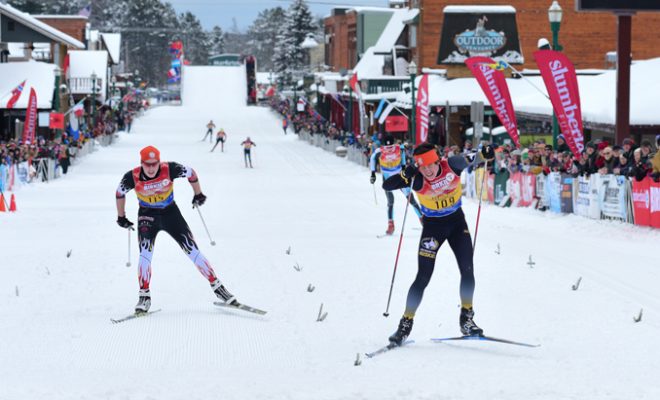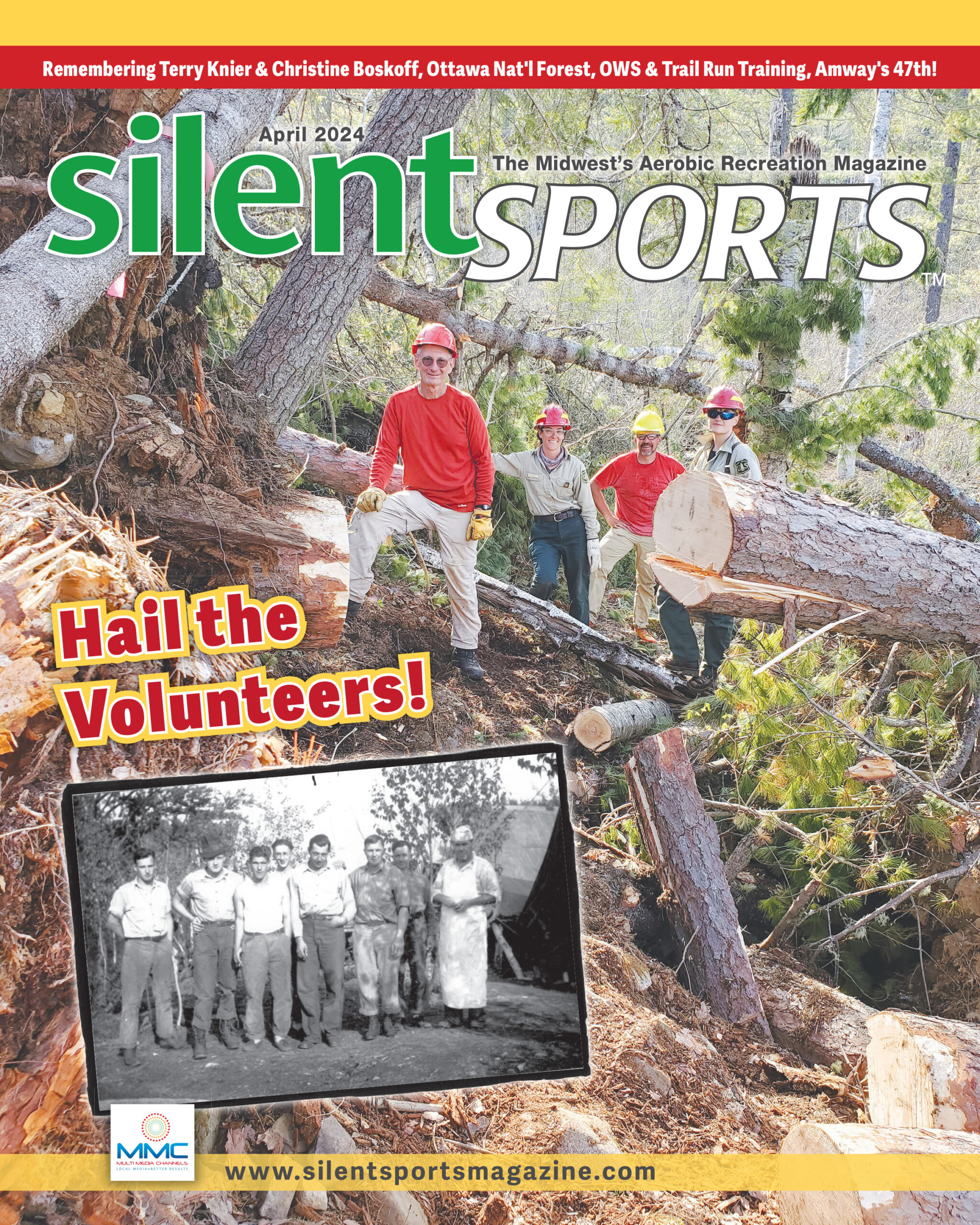Avoid the bonk: A paddler’s guide to the Birkie

PADDLING/CROSS COUNTRY SKIING
BY REBECCA BARTON-DAVIS
First and foremost, I am a paddler, but every winter I moonlight as a cross-country skier. It isn’t always easy to blend in with my big shoulders, awkward technique and penchant for double-poling, but somehow over the last five years, I have evolved from a once-a-year racer into a Birkie regular. Each year my husband and I pack the truck with every pair of skis, wax and piece of equipment we own, and make the journey to the Wisconsin Northwoods. With only a couple of Birkie’s under my belt (although many ski marathons), I have a few pointers that will hopefully keep you lucid enough to snag a beer at the finish line.

Rebecca Barton-Davis, right, along with husband, Mike, center, stand with Don Camp after the 2018 Birkie finish.
Dress for success
If paddling is your first sport, winter dress often consists of many, many layers … including the wind and waterproof varieties. These things can stay in the closet for the Birkie unless the forecast actually calls for pouring rain. Skiing is going to warm you up significantly more than a winter paddle, and you need much more mobility in order to ski comfortably. Stick to thin base layers, moisture-wicking ski suits and breathable outer layers that allow the sweat to evaporate, keeping you much more comfortable for the entire race. If you want to dress a little heavier, make sure to have a good hat, a buff/neck gaiter and a good pair of ski gloves/mittens. Also, a good pair of sunglasses is a must – preferably with orange or rose lenses that give you good visibility without fogging up. If you must wear extra layers, it should be to the starting line – things that you can shed quickly and easily as you are entering the starting corral.
Manage your start
My first Birkie was in 2016, and I still have nightmares from the mad dash to the line as each corral is moved forward. Skis and poles in hand, hundreds of skiers mob to get a coveted frontline spot. The rest of us are left to start in a jigsaw-puzzle formation, five different pairs of skis overlapping as the gun goes off – we pray that those whom we are interlocked with manage to stay upright and won’t break our poles. Definitely fight for a front-line spot, but if that doesn’t happen, view the first kilometer as a time to avoid a mistake, instead of a time to assert your dominance. Having all equipment intact and being able to (kind of) breathe will serve you well through the next 49 or 54k.
Snacks!
If I don’t eat or drink until 00, there is no way I will have the energy left to make a strong finishing push. If you are starting in the faster waves, the aid stations may need to supply you with all of your calories, but with so many people, it is a good idea to take a hydration belt so you aren’t stuck in a freezing line waiting for lukewarm Gatorade. This being said, if the bananas, chocolate chip cookies or shot blocks offered by volunteers are calling your name, make sure to grab them. My strategy is to eat a little early, and then often. Waiting until you are starving means you are too late, but you should never feel “full” during the ski race. Paddling race food will definitely translate well, and as a paddler, you will have an advantage because you have trained yourself to eat when racing hard. If you are going too hard to keep food down … you are going too hard for this length of race!
Free speed
Carrying speed through transition is something the elite skiers will utilize during the Birkie, and you can, too. Many skiers, especially those who may have skipped leg day, are going to use the transitional times to take a little rest, but this is the best time to bank “free” speed. By staying in your tuck all the way to the bottom of the hill, you will gain a few extra feet of glide. The same goes with skiing hard over the top of the hill to get an extra push starting your next descent. Where an elite skier can probably maintain this momentum all the way up the next hill, you may have to relax a bit mid-climb; but just keep methodically plugging away while controlling your heart rate to use your speed where it will get you the best return.
Use your strength
Paddlers have a unique advantage when it comes to the transition to cross-country skiing – we have ample upper body and core strength. Use this to your advantage and to save energy by double-poling. A pure skier won’t double-pole much at all in a skate race, but if your thighs are burning and you can hardly bear the thought of another climb, take advantage of the flatter sections to take a double-pole break in the track. This will save your legs for the big climbs. If you are classic, the transition to double-poling is even easier. A 50k race isn’t the time to be prideful or try to make big fitness and technique gains; it is time to put your best effort forward, regardless of what it looks like to more conventional skiers. The last few kilometers are mainly crossing the lake, and this is a perfect time to let your tired lower body rest. Even those who are still skating well may want to try double-poling just to see if it works on the lake – standing water or uneven terrain can make this a better choice than an uncontrollable V2. Chances are, you will notice some others following in your tracks.


